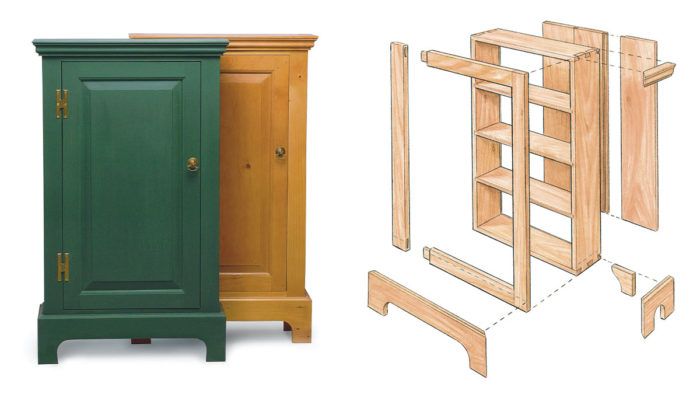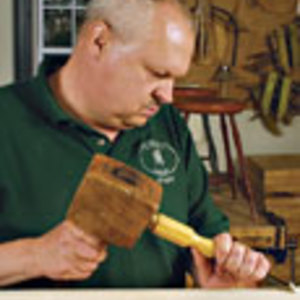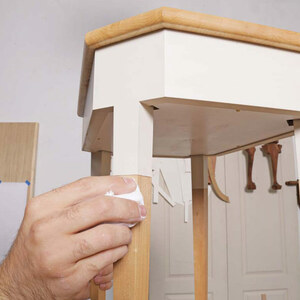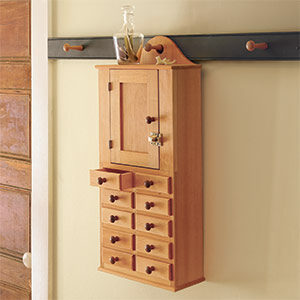Colonial Cupboard
Freestanding cabinet offers a tutorial on hand-cut joinery
Synopsis: This article on a small freestanding cupboard explanation offers a tutorial on hand-cut joinery with nine types of joints, and you’ll get to express your creativity. The author explains how to modify dimensions. He shows how a dovetailed box forms the carcase and rabbets and dadoes hold the shelves. A face frame, cornice, and bracket base add extra detail, as does his explanation of various crown molding options. You’ll learn how to make quick dadoes with a utility knife and chisel and how to make a door with a floating face panel.
This little cabinet is based on a late- 18th-century original owned by a friend of mine. It’s a rare piece, and antique dealers regularly pester him about selling it. The dealers want his cabinet for the same reason you will want to make it. There is always demand for an attractive and handy storage space.
The cabinet is interesting for woodworkers for two reasons: First, it’s a tutorial on hand-cut joinery. Although a small piece, this cabinet requires nine types of joints. You will get some practice on dovetails, dadoes, rabbets, shiplaps, coping, miters, panel-in-groove and mortises and tenons (both blind and through-). While some of the work would be more straightforward if it were done on machines, there is value in sharpening your hand-tool skills (and certainly less dust and noise). The choice is yours, of course.
Second, this cabinet is a chameleon. It can be expressed in a host of ways. It’s a good example of how a piece of furniture can be dressed up or down.
Another plus is that you can drastically change this cabinet’s dimensions to make it fit a particular space or application: My cabinet was designed to house my 8-year-old’s videocassette collection. You can even substitute a base molding for the bracket base and hang this cupboard on a wall.
Most of the stock is either 3 ⁄4-in.-thick or 1 ⁄2-in.-thick pine. The cornice is 5/4 stock. I went to a local home center and bought #2 common boards, 1x8x12. There are so many small parts to the cupboard that I was able to work around most of the large knots or place them in shelves or back boards. The dime-sized knots that appear in the carcase and door give me just the look I had want—not too perfect but not knotty pine, either.
As you build the piece, remember to use reference marks to keep track of parts and their positions.
The carcase comes first
There are two large dovetails on each corner. Although it makes no real difference, my habit is to lay out the pins first. I sized the pins by eye, so each joint varies slightly. Because the dovetails are mostly covered by the cornice or the bracket base, uniformity does not matter.
From Fine Woodworking #151
For the full article, download the PDF below:
Fine Woodworking Recommended Products

Dividers

Festool DF 500 Q-Set Domino Joiner

Compass























Log in or create an account to post a comment.
Sign up Log in